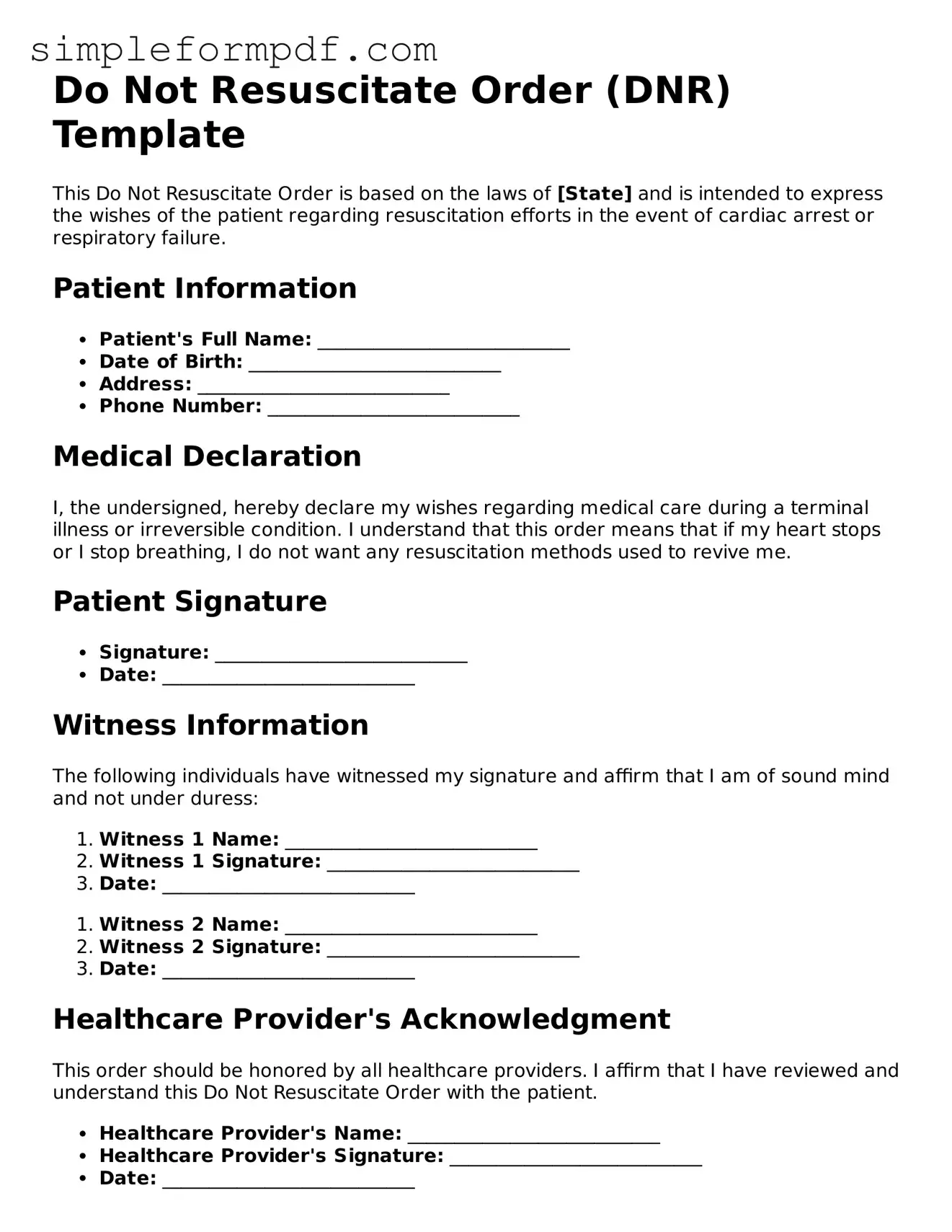Do Not Resuscitate Order (DNR) Template
This Do Not Resuscitate Order is based on the laws of [State] and is intended to express the wishes of the patient regarding resuscitation efforts in the event of cardiac arrest or respiratory failure.
Patient Information
- Patient's Full Name: ___________________________
- Date of Birth: ___________________________
- Address: ___________________________
- Phone Number: ___________________________
Medical Declaration
I, the undersigned, hereby declare my wishes regarding medical care during a terminal illness or irreversible condition. I understand that this order means that if my heart stops or I stop breathing, I do not want any resuscitation methods used to revive me.
Patient Signature
- Signature: ___________________________
- Date: ___________________________
Witness Information
The following individuals have witnessed my signature and affirm that I am of sound mind and not under duress:
- Witness 1 Name: ___________________________
- Witness 1 Signature: ___________________________
- Date: ___________________________
- Witness 2 Name: ___________________________
- Witness 2 Signature: ___________________________
- Date: ___________________________
Healthcare Provider's Acknowledgment
This order should be honored by all healthcare providers. I affirm that I have reviewed and understand this Do Not Resuscitate Order with the patient.
- Healthcare Provider's Name: ___________________________
- Healthcare Provider's Signature: ___________________________
- Date: ___________________________
This Do Not Resuscitate Order is valid as per the laws of [State]. It is recommended that copies of this order be provided to all relevant parties, including family members and healthcare providers.
